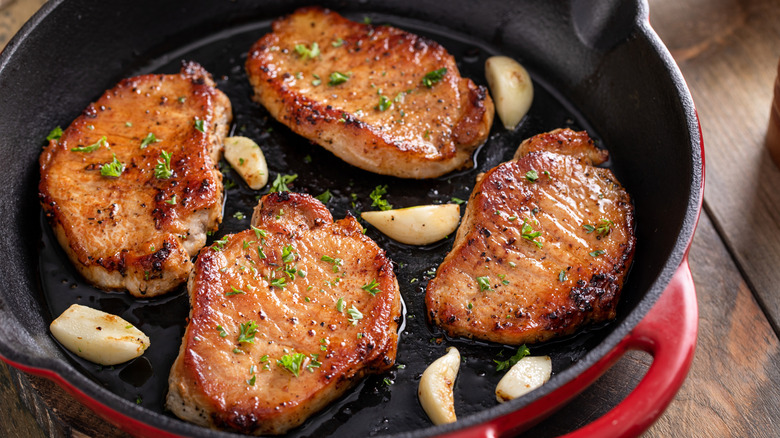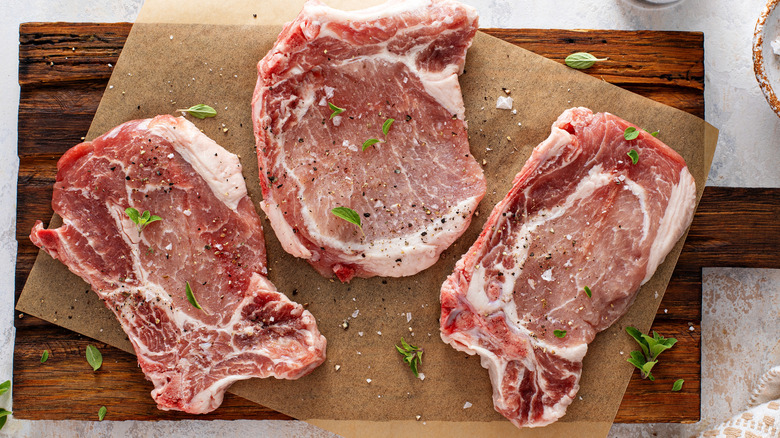How Hot Should Your Pan Be For Perfectly Seared Pork Chops?
Pork chops are simple to incorporate into your dinner rotation, and they can easily take on tons of flavor with a good marinade, sauce, or preparation technique. One particularly great way to elevate most pork chop recipes and introduce extra taste and textural intrigue is searing the meat. However, a common misconception about searing is that the pan needs to be scorching hot. On the contrary, this can lead to overcooking relatively lean meat cuts like pork chops, which tend to toughen if cooked too quickly. Alec Bradford, owner of farm-to-table Charleston, South Carolina restaurant, Herd Provisions, which features pan-seared pork chops with caramelized fennel butter on the menu, says not to "have the heat on high — a mid-high heat is best."
The point of searing is not to cook the meat through. Instead, it's all about adding flavor and getting a caramelized outside prior to cooking the meat fully. Heating the pan to medium before searing pork chops for a minute on each side (or until browned) will provide the perfect crisp exterior, without quickly overcooking or burning the meat. After a brief sear, you can lower the pan's heat even further to finish cooking. For the most tender pork chops, it also helps to deglaze the pan with wine, broth, or other cooking sauces after searing, before simmering.
More tips for tender, seared meat
Heating the pan to medium will help you make flavorful, crispy seared pork chops with peach chutney or marinated jerk pork chop recipes. But there are some more tricks of the trade to ensure optimal juiciness. Specifically, Bradford notes how important it is to "stay attentive" and use a meat thermometer when cooking and searing the meat. While the USDA recommends cooking pork to an internal temperature of 145 degrees Fahrenheit, the temperature shouldn't rise that far during searing since you're not cooking the meat in the searing step. Once you lower the heat and cook the pork chops in sauce or broth, monitor your chops regularly until they reach 140 to 145 degrees and remove the meat from the pan to avoid carryover cooking, which could make your meat dry. Let the meat rest for a few minutes, so the juices don't leak out by cutting it too early.
To achieve a perfect sear without overcooking the meat, you can also choose thicker cuts of pork at the grocery store, since thin pork chops can become tough quickly. Thicker bone-in chops generally take longer to cook, which will work in your favor when searing and avoiding high heat. It also helps to pat your meat dry before searing to avoid excess moisture and steam from interfering with browning. With these searing tips, your pork chop dinner is sure to pack an extra flavorful kick.

